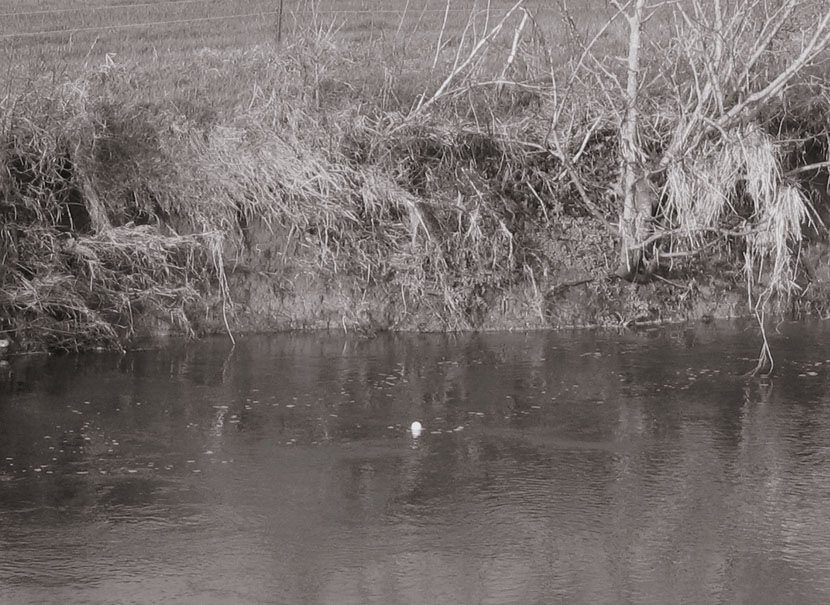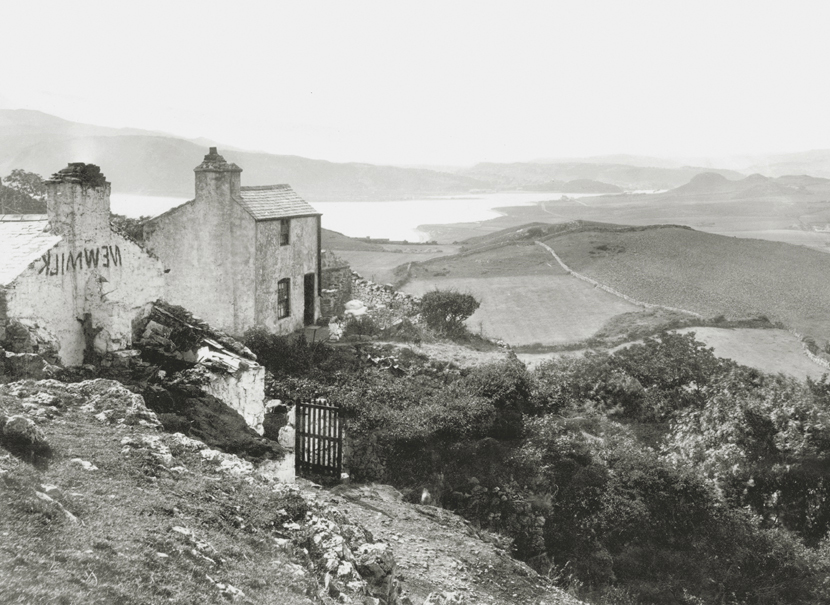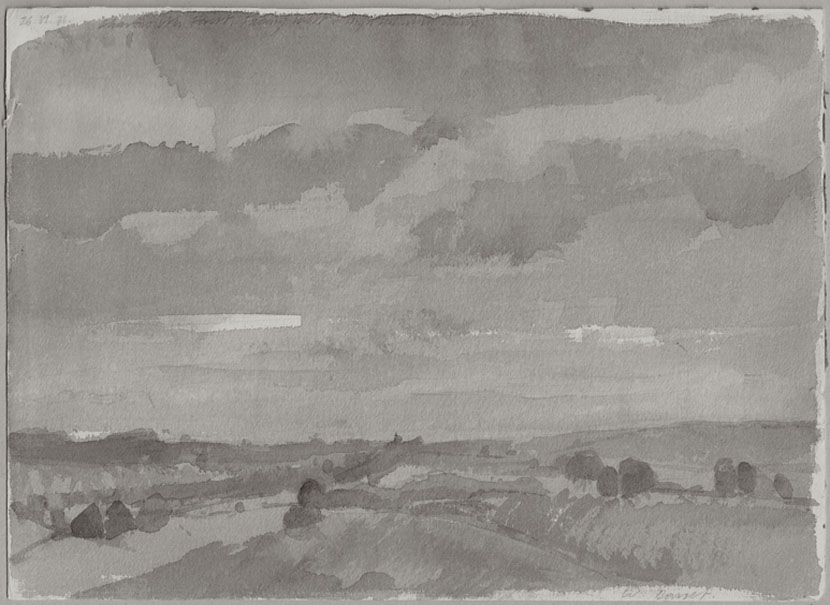Blank
“Devonmoor/
Made in England”

“Devonmoor/
Made in England”

... all along a lane.

Up to twenty-five times a day, the north-westerly road from the town, before crossing the river and ascending the valley side, is obstructed by the closed barriers of the level crossing, allowing the momentary use of the single track line in either a south-westerly or a north-easterly direction.

The background vignette
throughout wdnrm (2005),
brown ink on buff manilla,
offset at
Axminster Printing.

After, and in memory of
Brian Lane’s Quiet Yellow
Sounds on the River / Red
with Menace, an event with
around one hundred and
fifty of both red and yellow
polystyrene balls staged on
the river at Great Blakenham,
Suffolk, in 1975. “Towards an
understanding of the graphic
images created by uniform
objects floated on the surface
of moving water...”
River Axe, Devon.


The telephone number of the
tower at the top of Leith Hill
in Surrey is 01306 712434;
the viewing platform of which
is, at 1000-feet, the highest
point in south-eastern England.

Proof, unpublished.

Haslemere Educational Museum, Surrey.

Bridport, Dorset.

Conwy Valley, 1890.
Francis Frith Collection

The 16-gauge zinc letterpress
line-block for printing the
stock of the second edition
of Black Bob (2008).

62 x 1975, 49 x 1840,
42 x 1730; screenprint, n.d.

“The traditional bunch consists of a collection of watercress stems, about 140mm in length weighing about 110g and held together by a rubber band.
The brand name, address and Code of Practice number of the producer should be included
on a small rectangular card inserted in the bunch.”
Watercress, production of the cultivated crop, London 1983.

Michael Upton: 26.vi.71, Charmouth Forest, facing
west, high sea [...] W. Dorset; watercolour, 178 x 253.
Michael Upton’s ‘Landscape
Burial’ (1971) was made
up of around two hundred
watercolours executed
mainly in and around west
Dorset. Many of the locations
represented were chosen
at random with the aid of
Ordnance Survey maps and
a pin. The pictures were
gathered together in a wooden
box with the intention of burial
in the landscape so “only their
memory would remain”.
